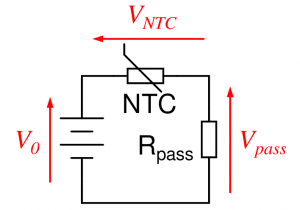Update on the AVR-Dx chips and PlatformIO
Changes to the system files When removing the link to the Arduino framework from the platformio.ini, PlatformIO reverts back to the older 1.7 toolchain, which still lacks support for the…
Changes to the system files When removing the link to the Arduino framework from the platformio.ini, PlatformIO reverts back to the older 1.7 toolchain, which still lacks support for the…
The AVR-EA family After the AVR-DA, AVR-DB and AVR-DD, already in 2022 Microchip continued the launching of new AVR-based microcontrollers with their AVR-EA series. These have some improvements over the…
History When i started this blog 15 years ago, one of my first entries from May 2010 was about my first steps with Atmel microcontrollers. Since then these microcontrollers have…
Atmel Microchip Studio 1 1/2 years ago now I have finally abandoned Microchip (Atmel) Studio for programming AVR microcontrollers. I have been using Atmel Studio from the very first day…
There are other, more detailed analyses, looking behind the curtains of ChatGPT, this is just a short summary of my own experiences. For more details, look e.g. here: ChatGPT: Interacting…
Bauhaus Uppsala har en märklig prissättning. Redan för några år sen var det svårt att inte nappa för ett rea-erbjudanden på lysdiodslampor som var "nedsatta" från SEK 149:- till SEK…
The electronics distributor https://www.pollin.de/ is often selling surplus displays, but normally these are not very well documented. The TIAN MA A2C00096100 LCD module is a 90 mm x 20 mm…
[:de]Wie scheinbar jeses Jahr um diese Zeit, so habe ich auch jetzt wieder ein als Rechnung getarntes Angebot erhalten, an eine mysteröse Firma ein paar hundert Euro zu überweisen. Aber…
User cbm80amiga has uploaded a nice library to render 7-segment numbers on graphical displays - especially for Arduinos. But the code can as well be used without any Arduino in…

Following a discussion on Facebook I put here an online tool to calculate the output of a voltage divider consisting of a fixed resistor and an NTC thermistor following a first order Steinhart–Hart equation.
The calculations are based on a voltage divider where either the voltage over the NTC or over the pass resistor is measured. You can change the values in the script according to your own settings. If you break the script for some reason, just reload the page.
SageMath uses Python as programming language.